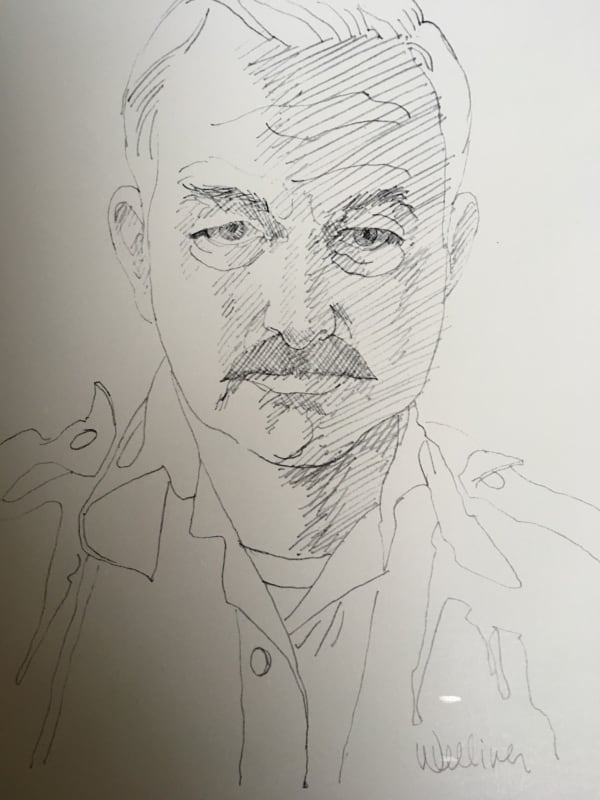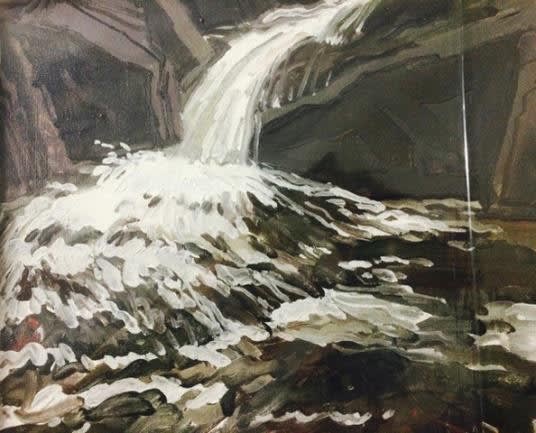"I consider myself an animal part of nature. Not a Homo sapien. I consider myself part of nature like the deer, the bear, whatever else are out there. The small things. And I feel totally at home there. Completely, absolutely at home in the woods. If I never got anything else from painting, ever, except some real gut understanding that I'm a part of it, it was all worth it."
-Neil Welliver
Neil Welliver began life in 1929, in the small town of Millville, Pennsylvania, a village fueled by sawmills and gristmills. He went on to receive his MFA from Yale in 1955, where he stayed on to teach for the next ten years, before becoming chairman of the University of Pennsylvania Graduate School of Fine Art.
Welliver visited his artist friends Alex Katz and Lois Dodd, who had studios in Maine and, at their urging, he bought a 106-acre farm in Lincolnville, where he created an organic farm and which eventually became his permanent home, even when he had to commute to his job in Philadelphia.
Into the Woods
Neil Welliver found his muse in the woods of Maine. His early paintings included figures in the woods, using his sons and female models, embedded in the landscape. Eventually, Welliver stopped using figures in his paintings and focused solely on the landscape itself.
His process was arduous. In all seasons, even during bitter Maine winters, Welliver would walk into the woods, carrying an easel, a heavy backpack filled with tubes of eight colors of paint, brushes, a can of turpentine, rags, water jugs, toilet tissue and binoculars, and set up his easel in a place that spoke to him.
He would paint small studies while in the woods, and return to his studio to use many of the studies as the foundation for larger works, like Bear Hole, available at the Surovek Gallery.
Welliver's works are both powerful and serene, life-like and abstract. He said that he liked the intimate, soothing Maine landscape, "things growing, dying…the process of life is there, the landscape changes, in the same spot, continuous change." He said his goal was to, "extract all the power you can out of the vision of that place. Sometimes that can't done on a small canvas."
Neil Welliver's Legacy
Neil Welliver's life was shaped by some of the tragedies that he endured, even as he was gaining acclaim as one of America's foremost landscape painters. In 1975 his Lincolnville home was destroyed. He lost many paintings, all the buildings. He rebuilt, moving new buildings on to the land. A year later, his infant daughter died, followed by the death of his wife about a year later. Two of his sons died in adulthood.
Around the time of the fire, Welliver's son, Titus, showed an interest in painting and Welliver began to teach him to paint. Titus, however, wanted to become an actor, and with his father's blessing, pursued a career in film and television.
Years later, Titus resumed painting and was again encouraged by his father to pursue the avenues in which he felt most fulfilled.
Neil Welliver died in Maine in 2005, and did not get to see Titus' great success as the lead in the series Bosch, or hear the fondness and gratitude that Titus expresses for his father's support when he's interviewed about his successes.
Welliver's works are part of the permanent collections of the Metropolitan Museum of Art, the Museum of Modern Art and the Whitney Museum of American Art.
Neil Welliver's Oil Paintings at Surovek Gallery
Please contact us if you would like more information about the works of Neil Welliver available at the Surovek Gallery.
References:
Ken Johnson. Neil Welliver, 75, Painter of Large-Scale Landscapes, Is Dead. The New York Times. April 8, 2005.
David Ambrose. Neil Welliver: Paintings and Woodcuts, 1967-2000 at Tibor de Nagy. WhiteHot Magazine of Contemporary Art. August 2019.
John Ashbery. Frank H. Goodyear, Jr. Welliver. Rizzoli International Publications, Inc. 1985.





